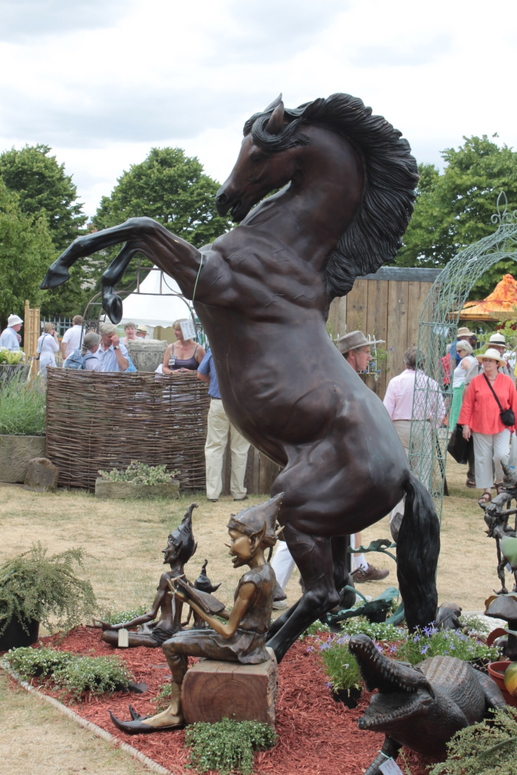Fluffy hen garden sculpture – Chelsea Flower Show 2010 garden product review
. I like to see animals in gardens – but so do foxes. So if you want to keep hens you must either have a cage, a high wall or a nice fluffy model of a hen. Take it from me, the latter choice is the least trouble.
Wire wild boar sculpture – Chelsea Flower Show 2010 garden product review
. Steel wire is very well suited to garden sculpture. If you had it indoors, it would always look much the same, except for getting a little dustier each year. In the garden it keeps changing, with rain, sun, cobwebs and everything else which happens in gardens. And the rusty iron is an excellent foil for a wide range of leaves and flowers.
Garden Buddha statue
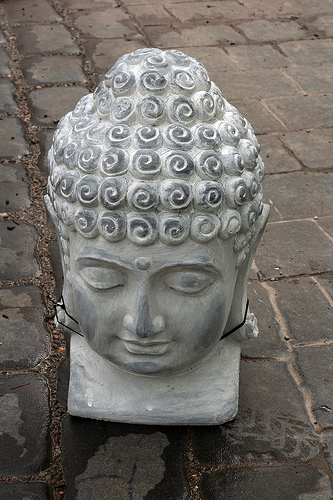 This is not the nicest Buddha we have ever seen. But Buddhism is the great garden religion and no historical figure is more deserving of a place in gardens. The Buddha was born in a garden. Then he lived in a garden. Then he spent his life teaching in parks and gardens. He spent most monsoon seasons in gardens. Then the Buddha died in a garden. Buddhism is the religion of peace.
This is not the nicest Buddha we have ever seen. But Buddhism is the great garden religion and no historical figure is more deserving of a place in gardens. The Buddha was born in a garden. Then he lived in a garden. Then he spent his life teaching in parks and gardens. He spent most monsoon seasons in gardens. Then the Buddha died in a garden. Buddhism is the religion of peace.
Om mane padhme hum. ‘Hail oh jewel in the flower of the lotus’.
Erotic garden sculpture and ornament
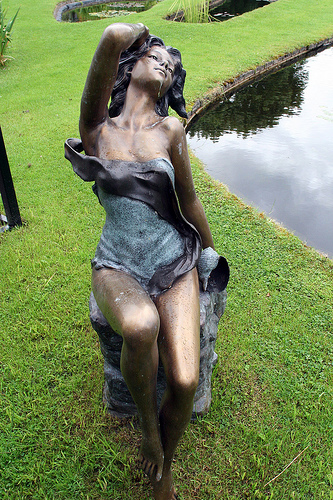 Well come on, that’s what it is – and that’s what a lot of garden sculpture always has been and always will be. But is it good taste? Well that’s for you to judge!
Well come on, that’s what it is – and that’s what a lot of garden sculpture always has been and always will be. But is it good taste? Well that’s for you to judge!
She looks a touch out of place in this suburban setting but could be OK if tucked away in a bed of flowers.
Bad taste in garden statuary
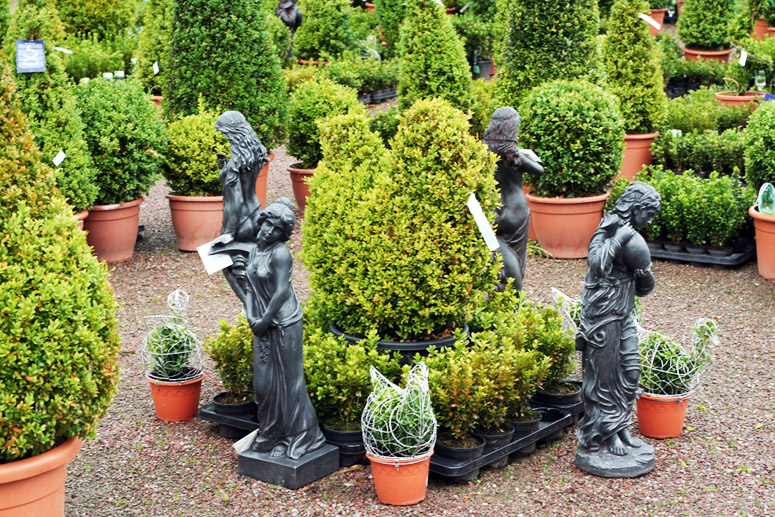 The Romans used to say: De gustibus non est disputandum (‘matters of taste can’t be disputed’) The English say ‘there’s no accounting for taste’. And since these ghastly items are being offered for sale, there must be people who like them. But, seriously, they are seriously bad taste: plastic pots, painted concrete garden statues, badly clipped box. Ugh. Ugh. Ugh.
The Romans used to say: De gustibus non est disputandum (‘matters of taste can’t be disputed’) The English say ‘there’s no accounting for taste’. And since these ghastly items are being offered for sale, there must be people who like them. But, seriously, they are seriously bad taste: plastic pots, painted concrete garden statues, badly clipped box. Ugh. Ugh. Ugh.
Great garden gnomes
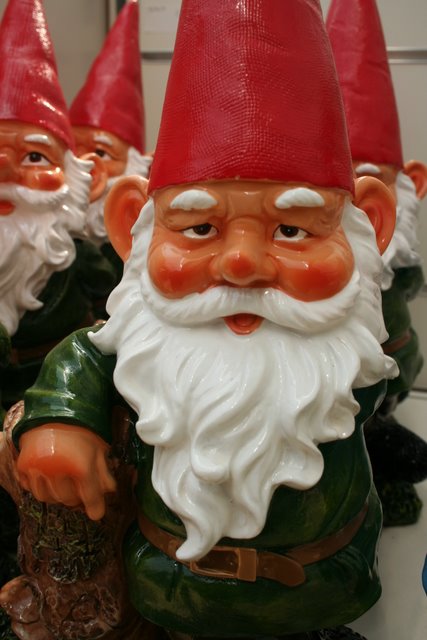 Gnomes are small and they live underground. Their name probably comes from the Greek genomos “earth-dweller”. So they are very respectable creatures with a longer history than the Americans.
Gnomes are small and they live underground. Their name probably comes from the Greek genomos “earth-dweller”. So they are very respectable creatures with a longer history than the Americans.
The first garden gnomes were made in Germany in the mid-1800s and gnomes are still better-loved by the Germans than by any other people. Philip Griebel made terracotta gnomes for gardens because of their famous willingness to help with the gardening after dark.
If you have seen some ugly examples in gardens – please don’t blame the gnomes. Tell the owners to find better gnome suppliers and to treat them with unfailing kindness.
One other point: hide your gnomes in dark places. Do not put them the full, hurtful, glare of sunlight. Just don’t do it.
The organizers of the Chelsea Flower Show have a ban on gnomes but their ancestry is perfectly respectable. The word comes from Latin, with a root in ancient Greek, and represents a belief, widespread in archaic Indo-European animist culture, that gods live in the Earth. Gnomes are therefore as decent as Venus and Diana, and any divinity can be represented in good or bad taste. Fashionable in Victorian Britain after Sir Charles Isham displayed figurines he had brought back from Germany in his rockery, the prejudice against gnomes results from their subsequent popularity with the working classes.
Green grass garden girl
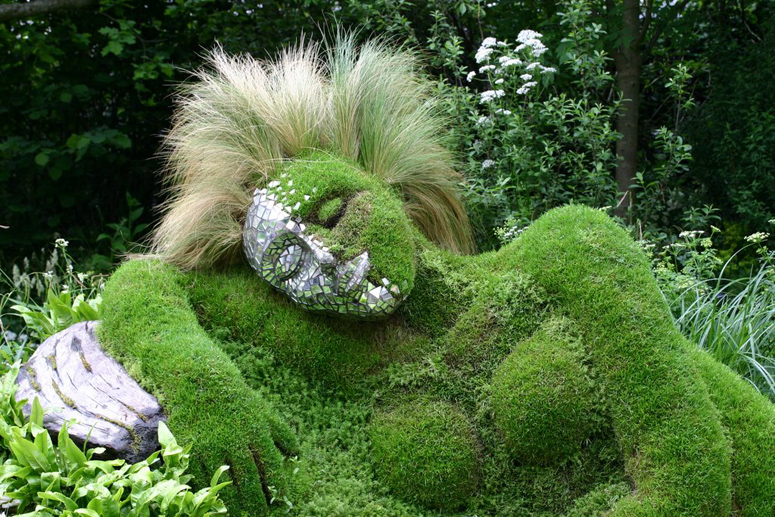 Isn’t she a beauty?
Isn’t she a beauty?
We put this photograph of her on Flickr.
The first comments were:
“Oh how absolutely cool.”
“Wow! Fab!”
“Very Cool”
The photograph was taken at the Chelsea Flower Show.
Trellis conservatory with charming cherub
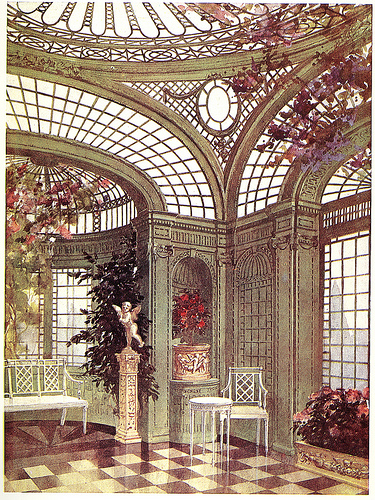 I have just bought a new cherub for my conservatory. He is a charming little thing and serves as an eyecatcher. The soaring vaults were pretty good as they were but my eye kept zooming round and round. It was dizzying. Now, it is peaceful. I walk in, sit on my cushioned rattan chair and focus my gaze on the little angel. It is a good preparation for a future life in the clouds, assuming St Peter lets me in.
I have just bought a new cherub for my conservatory. He is a charming little thing and serves as an eyecatcher. The soaring vaults were pretty good as they were but my eye kept zooming round and round. It was dizzying. Now, it is peaceful. I walk in, sit on my cushioned rattan chair and focus my gaze on the little angel. It is a good preparation for a future life in the clouds, assuming St Peter lets me in.
Chilstone Garden Ornaments
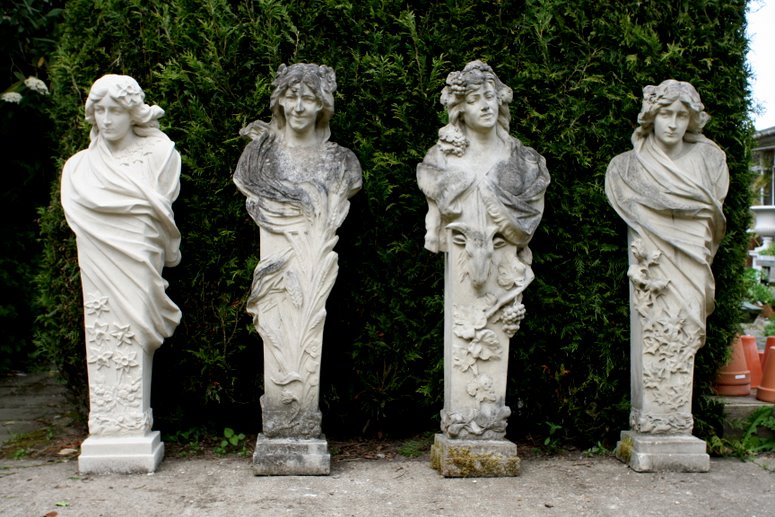 I like Chilstone Garden Ornaments. Compared to their rivals, they chose better originals to model and they have developed a superior process for casting stone. One can well believe the manufacturer’s claim that ‘once the ornament has taken on an antique patina it generally increases in value – many Chilstone items have been sold at Sotheby’s for many times their retail value’. Chilstone was founded in 1953 and later moved to Sprivers in Kent. The four terms in the photograph show progressive phases in the weathering process. Chilstone Terms represent the four seasons – Spring, Summer, Autumn and Winter. the spring of 2009 the prices were £592.00 each (+ VAT).
I like Chilstone Garden Ornaments. Compared to their rivals, they chose better originals to model and they have developed a superior process for casting stone. One can well believe the manufacturer’s claim that ‘once the ornament has taken on an antique patina it generally increases in value – many Chilstone items have been sold at Sotheby’s for many times their retail value’. Chilstone was founded in 1953 and later moved to Sprivers in Kent. The four terms in the photograph show progressive phases in the weathering process. Chilstone Terms represent the four seasons – Spring, Summer, Autumn and Winter. the spring of 2009 the prices were £592.00 each (+ VAT).
Note: a ‘Term’ can be defined as ‘a bust on a pedestal which tapers to the ground’. Like other senses of the word ‘term’ it comes from the Latin word for boundary or limit. Many Term sculptures represent the Roman god Terminus, who marked estate boundaries. The word ‘Herm’ used in connection with sculpture has a similar meaning but is used for statues of the god Hermes.


